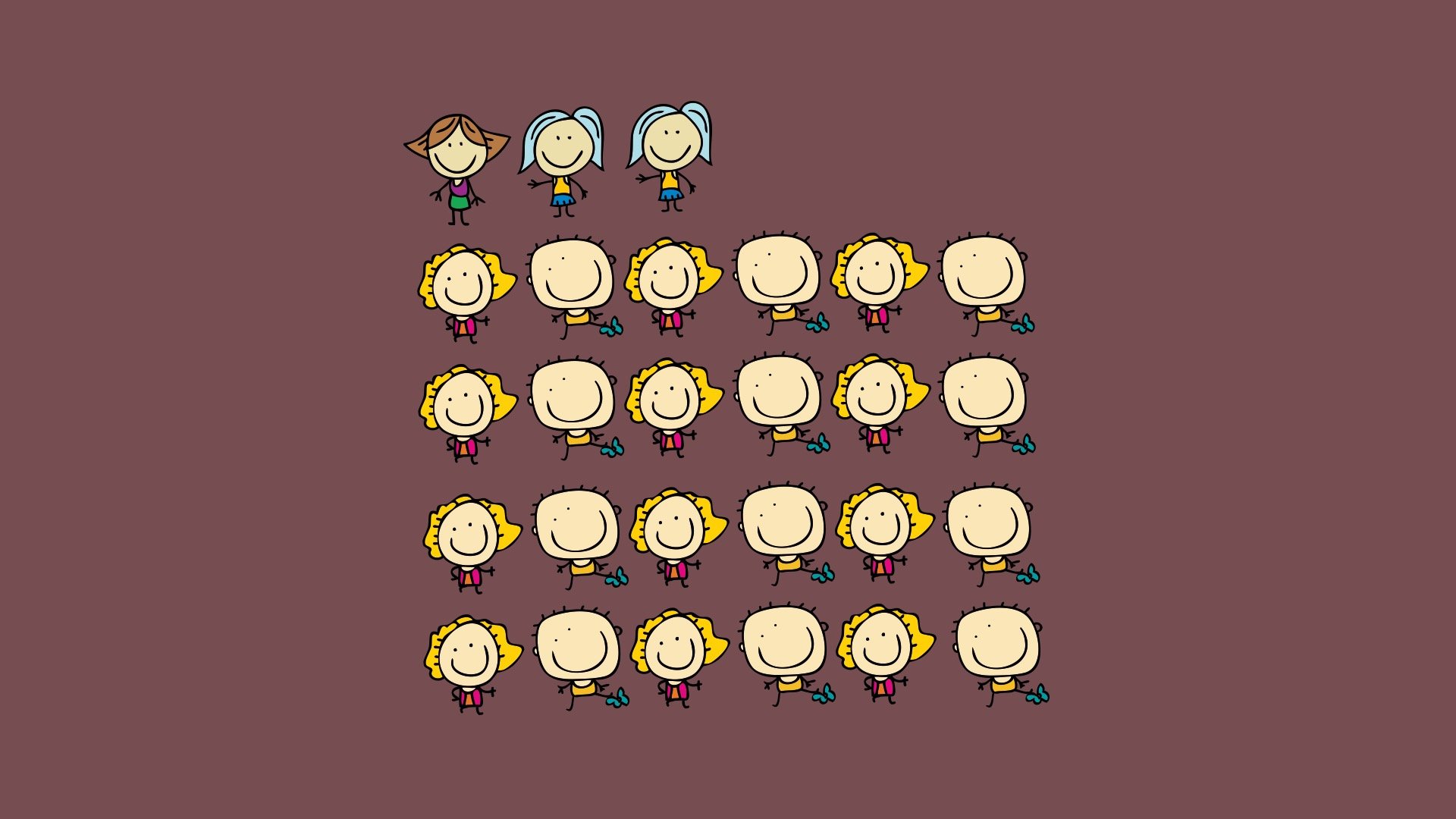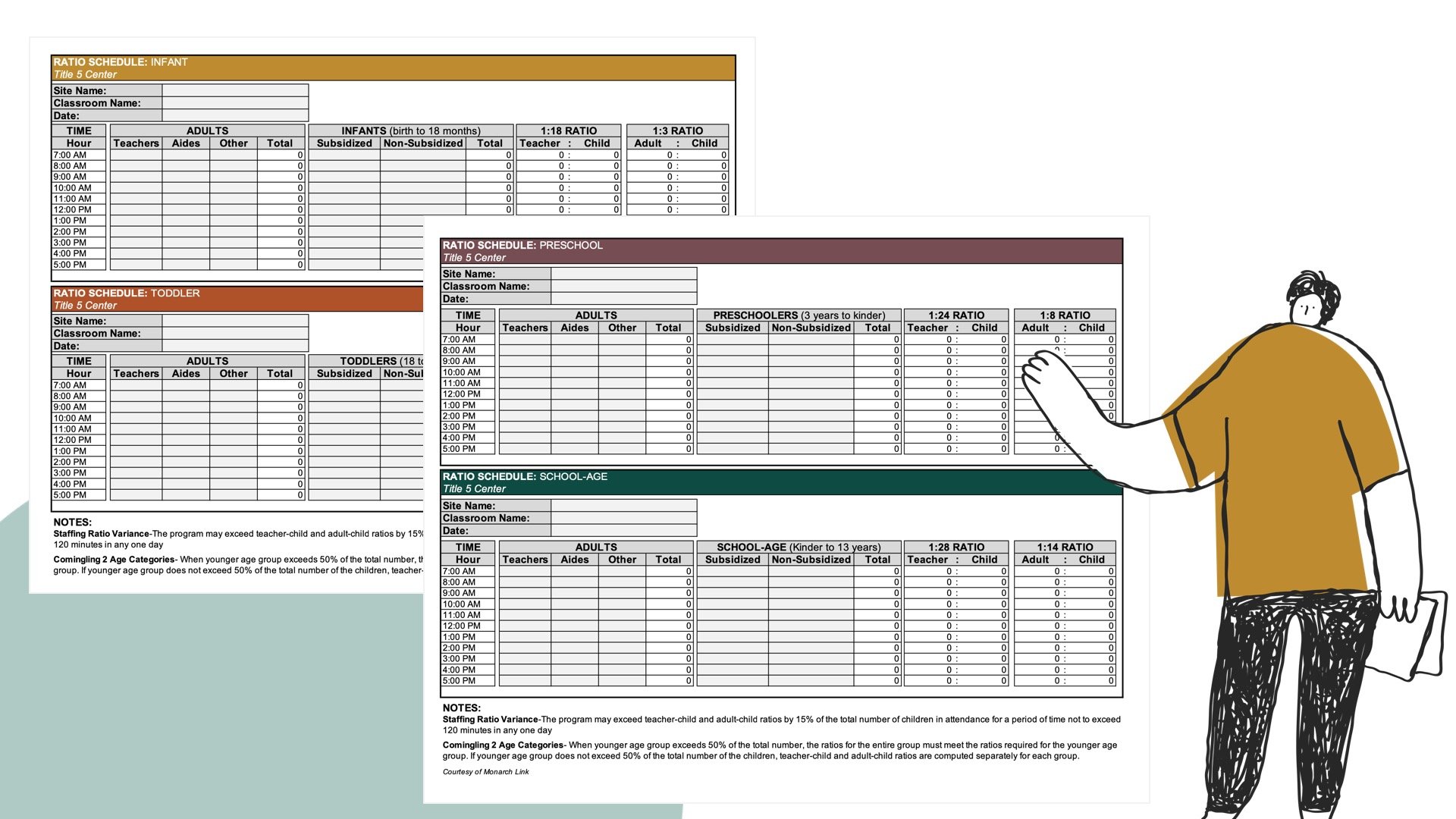Lesson 7
Staff-Child Ratios
Lesson 8
Environment Rating Scale
Lesson 9
Nutritional Needs
Lesson 10
Desired Results Profile & Data
Lesson 11
Qualified Staff & Director
Lesson 12
Staff Development
Lesson 13
Refrain from Religious Instruction
Lesson 14
Inventory Records
Lesson 15
Annual Evaluation Plan
Lesson 16
Fiscal
Lesson 17
CDMIS 801A & 801B Reporting
Compliance Indicator
The applicable staff-child ratios are met for each age group.
Regulations/Reference
CCD Program Instrument: III. Program Quality CCD 11
Welfare & Institutions Code: 10208, 10275, 10275.5
Title 5: 18013[d], 18135, 18290
Monitoring Review Evidence
Documentation that applicable staff-child ratios are met for each age group (Staff-Child Ratio Schedule: Form CCD-36)
Classroom observation
Watch Video Lesson ❯
Sample Forms/Tools ❯
Review Sketch Pad Notes ❯
Ratios
Title 5 sets stricter adult to child ratios in comparison to the Title 22 licensing regulations. Ratios of adult to children vary depending on the age of the children currently present or in attendance & the number of trained staff members present. The ratios in this lesson are based on Title 5 regulations.
Infant Ratios
For state funded programs, an infant is defined as a child who is from birth to 18 months old.
There must be 1 adult for every 3 infants. This is called a 1 to 3 adult child ratio.
For every 18 infants, 1 of the adults must be a qualified teacher. This is called a 1 to 18 teacher-child ratio.
Photo Example: This classroom has 18 infants, 1 qualified teacher & 5 other adults to be in compliance with the staffing ratio.
Toddler Ratios
For state funded programs, a toddler is defined as a child who is from 18 months to 36 months old.
There must be 1 adult for every 4 toddlers. This is called a 1 to 4 adult child ratio.
For every 16 toddlers, 1 of the adults must be a qualified teacher. This is called a 1 to 16 teacher-child ratio.
Photo Example: This classroom has 16 toddlers, 1 qualified teacher & 3 other adults to be in compliance with the staffing ratios.
Preschool Ratios
For state funded programs, a preschooler is defined as a child who is from 3 years old to enrollment in kindergarten.
There must be 1 adult for every 8 preschoolers. This is called a 1 to 8 adult child ratio.
For every 24 preschoolers, 1 of the adults must be a qualified teacher. Making it a 1 to 24 teacher-child ratio.
Photo Example: This classroom has 24 preschoolers, 1 qualified teacher and 2 other adults to be in compliance with the staffing ratios.
School-Age Ratios
For state funded programs, a school-age child is defined as a child who is enrolled in kindergarten to 13 years of age.
There must be 1 adult for every 14 children making it a 1 to 14 adult to child ratio.
For every 28 school age children, 1 of the adults must be a qualified teacher. Making it a 1 to 28 teacher-child ratio.
Photo Example: This classroom has 28 school age children, 1 qualified teacher and 1 other adult to be in compliance with the staffing ratios.
SPECIAL RATIO NOTES:
Commingled Age-Groups
YOUNGER AGE GROUP EXCEEDS 50%: Whenever groups of children of 2 age categories are commingled & the younger age group exceeds 50% of the total number of children present, the ratios for the entire group must meet the ratios required for the younger age group.
YOUNGER AGE GROUP DOES NOT EXCEED 50%: If the younger age group does not exceed 50% of the total number of the children present, the teacher-child & adult-child ratios shall be computed separately for each group
Staffing Ratio Variance
The program may exceed teacher-child & adult-child ratios by 15% of the total number of children in attendance for a period of time not to exceed 120 minutes in any one day.
Staff-Child Ratio Schedule
To ensure the applicable staff-child ratios are met for each age group & program agency must have a staff/child ratio schedule completed at all times.
The department provides the Staff-Child Ratio Schedule: Form CCD 36 to plan for ratios based on the composition of a classroom.
Contractors may develop their own Child Ratio Schedule form.
No matter what format is used, the ratio schedule can serve as your documentation to show that applicable staff-child ratios are met for each age group.
REMINDER: The ratio schedule must be maintained & updated when there are changes in enrollment.
Complete Knowledge Check ❯
After reviewing the video lesson & sketch pad notes, it’s time to check for understanding by completing a Knowledge Check. Note that Individual Knowledge Checks will conclude with a Certificate.










